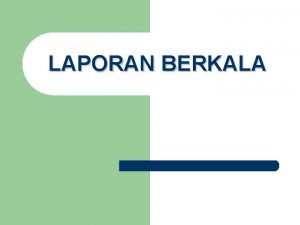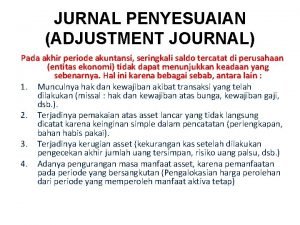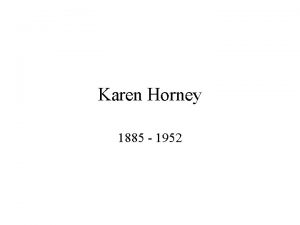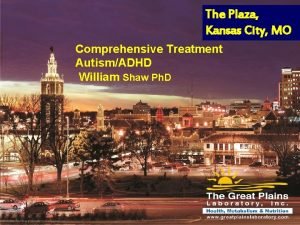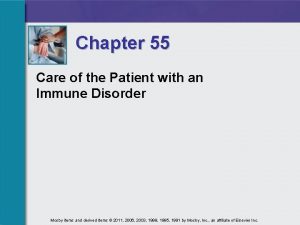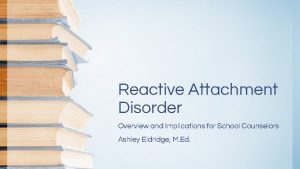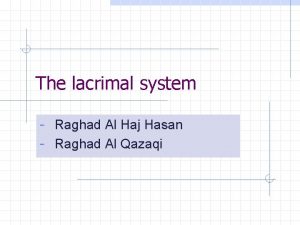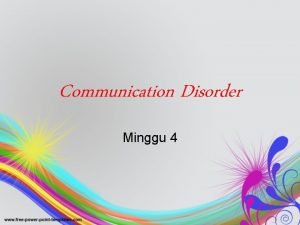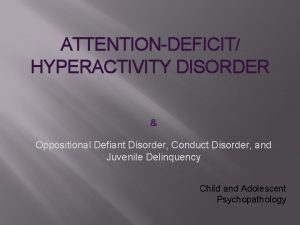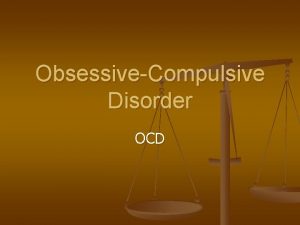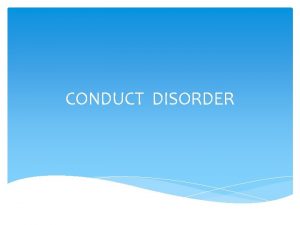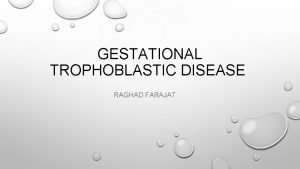Adjusment disorder Raghad al qazaqi Raghad al haj













- Slides: 13

Adjusment disorder Raghad al qazaqi Raghad al haj hasan

• Adjustment disorder is characterized by: increased anxiety, depressive symptoms, and/or disruptive behavior (eg, agitation, property destruction) that develops within 3 months of an identifiable stressor and lasts no more than 6 months after the stressor ends. • the stressful event is not life threatening (ex: divorce, termination of a romantic relationship, going to school, fail to meet goals , retiring. . ) • Symptoms in an adjustment disorder must be distressing and impairing.

• Not diagnosed when criteria of other disease present. • Symptoms are coded based on a predominance of either : üdepressed mood üanxiety ümixed anxiety and depression üdisturbance of conduct (such as aggression) üor mixed disturbance of emotions and conduct.


• mild depression in response to life changes is consistent with normal sadness. • Periods of sadness are a normal part of human experience and should not be diagnosed as a psychiatric disorder unless criteria are met for severity, duration, and clinically significant distress or impairment. • Evaluation of depressive symptoms occurring in response to psychosocial stressors must take into account the

The patient has a long-standing relationship with her primary care physician, who has treated her children as well. During the examination, she confides that she has been down since her youngest child left for college 2 months ago. The patient is worried about her daughter being away from home for the first time and whether she will be successful at school. At work, the patient occasionally has lapses of concentration when worrying about whether daughter is okay, but it has not affected her productivity. She says, "I still enjoy going out with my husband but all we do is talk about our kids. " The patient has occasional insomnia and tension headaches but notes that these are nothing new. Physical examination is normal.

finalized 2 months ago and she relocated to a new state to be closer to her daughter and grandchildren. The patient's sleep is restless and she is frequently awakened by household noises. During this time, she has also felt anxious and tense. The patient is overwhelmed by financial worries and the responsibilities of living on her own. Although previously outgoing, she now avoids opportunities to meet new people and socializes only with her daughter. The patient has no psychiatric history but does have a history of hypothyroidism treated with levothyroxine. Physical examination is unremarkable. TSH is 1. 6 µU/m. L.

This is normal sadness ! hypercholesterolemia. The patient has a long-standing relationship with her primary care physician, who has treated her children as well. During the examination, she confides that she has been down since her youngest child left for college 2 months ago. The patient is worried about her daughter being away from home for the first time and whether she will be successful at school. At work, the patient occasionally has lapses of concentration when worrying about whether daughter is okay, but it has not affected her productivity. She says, "I still enjoy going out with my husband but all we do is talk about our kids. " The patient has occasional insomnia and tension headaches but

Adjustment disorder ! difficulty falling asleep since her divorce was finalized 2 months ago and she relocated to a new state to be closer to her daughter and grandchildren. The patient's sleep is restless and she is frequently awakened by household noises. • During this time, she has also felt anxious and tense. The patient is overwhelmed by financial worries and the responsibilities of living on her own. Although previously outgoing, she now avoids opportunities to meet new people and socializes only with her daughter. The patient has no psychiatric history but does have a history of hypothyroidism treated with levothyroxine. Physical examination is

Treatm ent • Supportive psychotherapy (most effective). • Group therapy. • Occasionally pharmacotherapy is used to treat associated symptoms (insomnia, anxiety, or depression) in a time-limited fashion.

depressed, irritable, and worthless since being let go from her job 5 weeks ago. The week prior to her last menstrual period was particularly difficult, and she stayed in bed most of the day. Over the last month, the patient has lost 3. 6 kg (8 lb) and has felt unmotivated and unable to concentrate on looking for new work. Other medical conditions include hypothyroidism and migraine headaches. • The patient drinks 1 or 2 glasses of wine a few times a week and smokes marijuana once a month. Medications include levothyroxine and naproxen. Physical examination is normal. TSH level is 0. 9 µU/m. L.

• A Patients with sufficient depressive symptoms are diagnosed with MDD even if there is a clear psychosocial stressor that precipitated the depression (In patients who do not meet the criteria for MDD, adjustment disorder with depressed mood may be diagnosed if sadness, distress, and functional impairment develop ≤ 3 months following a psychosocial stressor).

Thank you
 Haj amin al-husseini quotes
Haj amin al-husseini quotes Meeqat map
Meeqat map Mp haj committee
Mp haj committee Ozmán vad népe
Ozmán vad népe Contoh adjusting entries
Contoh adjusting entries Adjustment dalam akuntansi
Adjustment dalam akuntansi Conversion disorder
Conversion disorder Specific learning disorder
Specific learning disorder Disorder of synovium and tendon
Disorder of synovium and tendon Neurotic needs
Neurotic needs Body dysmorphic disorder
Body dysmorphic disorder Pdd disorder
Pdd disorder Chapter 55 care of the patient with an immune disorder
Chapter 55 care of the patient with an immune disorder Reactive attachment disorder
Reactive attachment disorder




